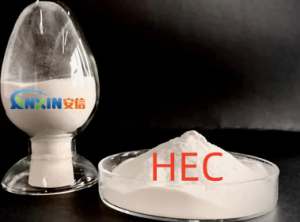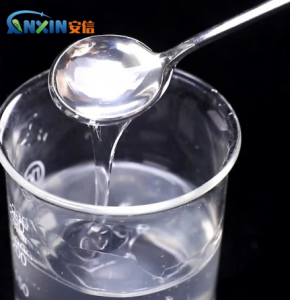Hydroxyethyl cellulose (HEC) is a nonionic, water-soluble polymer made from natural cellulose through etherification. Because it forms a transparent, stable colloidal solution when dissolved in water, it is widely used in coatings, household chemicals, building materials, oil drilling, and other fields. HEC’s impact on system viscosity is one of its most important functions, and this influence involves multiple factors, including molecular structure, solubility, and external conditions.
1. Relationship between Molecular Structure and Viscosity
The main chain of HEC is a cellulose backbone connected by β-1,4-glucose bonds, with the hydroxyl groups on the glucose units replaced by hydroxyethyl groups. The degree of substitution (DS) and molar substitution (MS) determine the molecule’s solubility in water and the flexibility of the chain segments. Longer molecular chains (higher molecular weight) and a moderate degree of substitution result in more entanglements after hydration, significantly increasing the viscosity of the system. High-molecular-weight HEC produces much higher viscosity than low-molecular-weight varieties at the same concentration.
2. Dissolution and Hydration Processes Affect Viscosity
The dissolution process of HEC in water involves three stages: wetting, dispersion, and hydration. When HEC powder comes into contact with water, the outer layer immediately absorbs water and expands to form a film, followed by gradual hydration of the inner layer. After complete hydration, the long-chain molecules are evenly dispersed in the water, forming a solution with a spatial network structure that hinders the flow of water molecules, thereby increasing the solution’s viscosity. If dissolution is incomplete or agglomeration occurs, the molecular chains are not fully unfolded, resulting in a low viscosity.
3. Relationship between Concentration and Viscosity
In the low concentration range, HEC viscosity increases approximately linearly with increasing concentration. When the concentration reaches the critical entanglement concentration, more entanglements form between the molecular chains, and the viscosity increases exponentially. Excessively high concentrations can cause the solution to exhibit a gel-like state, significantly reducing fluidity. Therefore, in practical applications, the appropriate dosage must be selected based on system requirements to achieve the target viscosity.
4. Effects of External Conditions on Viscosity
Temperature: The viscosity of HEC solutions decreases with increasing temperature. This is because high temperatures intensify the thermal motion of the molecular chains, reducing the stability of the hydration layer. pH: HEC’s viscosity is relatively stable within the pH range of 2-12, but extreme acid and alkaline conditions can disrupt the molecular chains, leading to a decrease in viscosity.
Salts and Solvents: As a nonionic polymer, HEC is relatively stable in the presence of electrolytes. However, high concentrations of salts or organic solvents can affect hydration, thereby reducing viscosity.
5. Viscosity Control in Various Systems
Coatings Industry: HEC provides suitable application viscosity and leveling properties in latex paints, preventing pigment and filler settling.
Household Chemicals: In shampoo and hand soap, HEC imparts a silky consistency and stabilizes foam.
Building Materials: In cement mortar, HEC provides water retention and consistency, improving application performance.
Oil Drilling: HEC is used in drilling fluids to adjust rheology and enhance chip-carrying capacity.
Hydroxyethyl cellulose significantly increases system viscosity through the hydration, entanglement, and spatial network formation of its long-chain molecules in water. Viscosity is not only related to HEC’s molecular weight, degree of substitution, and concentration, but is also affected by temperature, pH, and system composition. In formulation design, properly selecting the HEC type and dosage allows for precise control of product rheological properties, achieving a variety of effects from thin to thick.
Post time: Aug-08-2025

